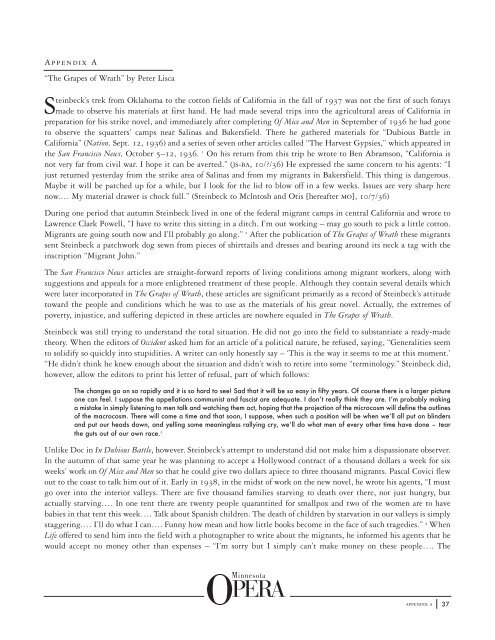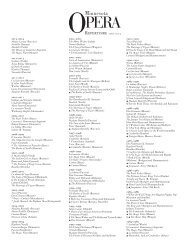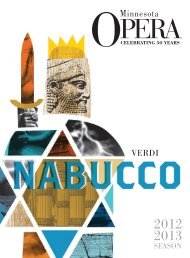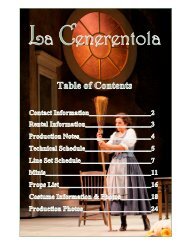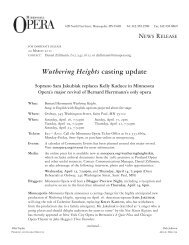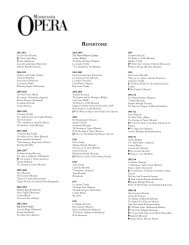You also want an ePaper? Increase the reach of your titles
YUMPU automatically turns print PDFs into web optimized ePapers that Google loves.
Appendix A<br />
“The <strong>Grapes</strong> of Wrath” by Peter Lisca<br />
Steinbeck’s trek from Oklahoma to the cotton fields of California in the fall of 1937 was not the first of such forays<br />
made to observe his materials at first hand. He had made several trips into the agricultural areas of California in<br />
preparation for his strike novel, and immediately after completing Of Mice and Men in September of 1936 he had gone<br />
to observe the squatters’ camps near Salinas and Bakersfield. There he gathered materials for “Dubious Battle in<br />
California” (Nation, Sept. 12, 1936) and a series of seven other articles called “The Harvest Gypsies,” which appeared in<br />
the San Francisco News, October 5–12, 1936. 1 On his return from this trip he wrote to Ben Abramson, “California is<br />
not very far from civil war. I hope it can be averted.” (JS-BA, 10/?/36) He expressed the same concern to his agents: “I<br />
just returned yesterday from the strike area of Salinas and from my migrants in Bakersfield. This thing is dangerous.<br />
Maybe it will be patched up for a while, but I look for the lid to blow off in a few weeks. Issues are very sharp here<br />
now.… My material drawer is chock full.” (Steinbeck to Mclntosh and Otis [hereafter mo], 10/7/36)<br />
During one period that autumn Steinbeck lived in one of the federal migrant camps in central California and wrote to<br />
Lawrence Clark Powell, “I have to write this sitting in a ditch. I’m out working – may go south to pick a little cotton.<br />
Migrants are going south now and I’ll probably go along.” 2 After the publication of The <strong>Grapes</strong> of Wrath these migrants<br />
sent Steinbeck a patchwork dog sewn from pieces of shirttails and dresses and bearing around its neck a tag with the<br />
inscription “Migrant John.”<br />
The San Francisco News articles are straight-forward reports of living conditions among migrant workers, along with<br />
suggestions and appeals for a more enlightened treatment of these people. Although they contain several details which<br />
were later incorporated in The <strong>Grapes</strong> of Wrath, these articles are significant primarily as a record of Steinbeck’s attitude<br />
toward the people and conditions which he was to use as the materials of his great novel. Actually, the extremes of<br />
poverty, injustice, and suffering depicted in these articles are nowhere equaled in The <strong>Grapes</strong> of Wrath.<br />
Steinbeck was still trying to understand the total situation. He did not go into the field to substantiate a ready-made<br />
theory. When the editors of Occident asked him for an article of a political nature, he refused, saying, “Generalities seem<br />
to solidify so quickly into stupidities. A writer can only honestly say – ‘This is the way it seems to me at this moment.’<br />
“He didn’t think he knew enough about the situation and didn’t wish to retire into some “terminology.” Steinbeck did,<br />
however, allow the editors to print his letter of refusal, part of which follows:<br />
The changes go on so rapidly and it is so hard to see! Sad that it will be so easy in fifty years. Of course there is a larger picture<br />
one can feel. I suppose the appellations communist and fascist are adequate. I don’t really think they are. I’m probably making<br />
a mistake in simply listening to men talk and watching them act, hoping that the projection of the microcosm will define the outlines<br />
of the macrocosm. There will come a time and that soon, I suppose, when such a position will be when we’ll all put on blinders<br />
and put our heads down, and yelling some meaningless rallying cry, we’ll do what men of every other time have done – tear<br />
the guts out of our own race. 3<br />
Unlike Doc in In Dubious Battle, however. Steinbeck’s attempt to understand did not make him a dispassionate observer.<br />
In the autumn of that same year he was planning to accept a Hollywood contract of a thousand dollars a week for six<br />
weeks’ work on Of Mice and Men so that he could give two dollars apiece to three thousand migrants. Pascal Covici flew<br />
out to the coast to talk him out of it. Early in 1938, in the midst of work on the new novel, he wrote his agents, “I must<br />
go over into the interior valleys. There are five thousand families starving to death over there, not just hungry, but<br />
actually starving.… In one tent there are twenty people quarantined for smallpox and two of the women are to have<br />
babies in that tent this week…. Talk about Spanish children. The death of children by starvation in our valleys is simply<br />
staggering.… I’ll do what I can…. Funny how mean and how little books become in the face of such tragedies.” 4 When<br />
Life offered to send him into the field with a photographer to write about the migrants, he informed his agents that he<br />
would accept no money other than expenses – “I’m sorry but I simply can’t make money on these people…. The<br />
appendix a 37


